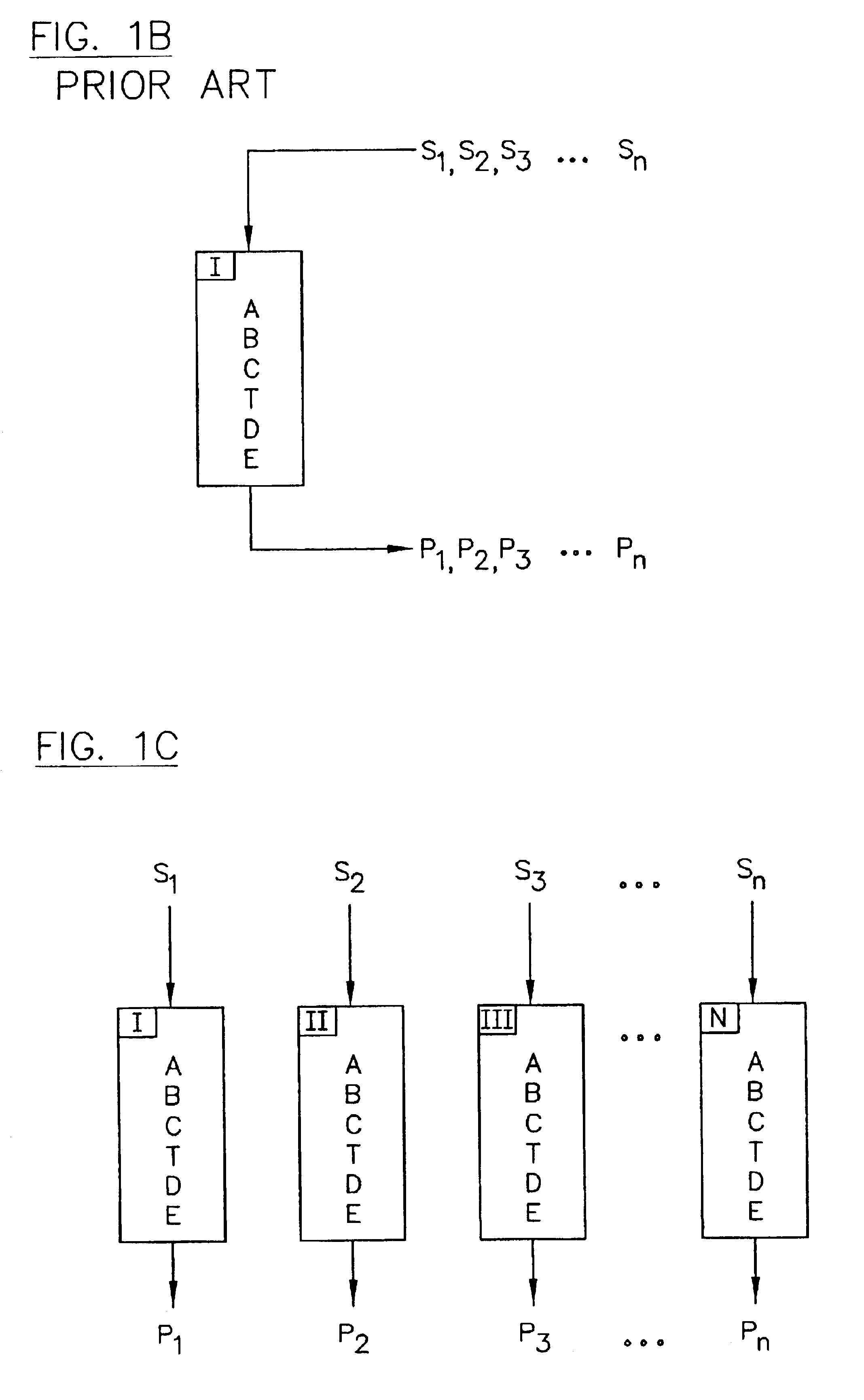Parallel high-performance liquid chromatography with post-separation treatment
a liquid chromatography and post-separation treatment technology, applied in the field of liquid chromatography, can solve the problems of not fully satisfying the efficiency of screening large numbers of samples in the widely available liquid chromatography system, and the application of such detection methods to parallel hplc systems was not considered, so as to achieve cost-effective, efficient and suitable effects
- Summary
- Abstract
- Description
- Claims
- Application Information
AI Technical Summary
Benefits of technology
Problems solved by technology
Method used
Image
Examples
example 2
In the first experiment of this example, 10 .quadrature.L of the solution of the narrow polyisobutylene standard (pib1100, Mw=1,110,000) from Polymer Standard Service was injected (volume) into the system with a metal filter holder with a 0.5 .quadrature.m pore size frit (Valco) connected instead of separation column. Tetrahydrofuran at 1 mL / min was used as a mobile phase. No derivatization / precipitation agent was pumped into the mixer at this time. The data were acquired for 2 minutes. No significant response was seen under these conditions.
In the second experiment, the procedure was repeated as described above; however, methanol at 1 mL / min was mixed with the mobile phase coming out of the Chromatographic / Flow injection system using the mixer inserted between the system and detector. Significantly large peak was observed on the chromatogram. In the third experiment, the procedure was repeated again using water at 0.2 mL / min as the precipitation / derivatization agent instead of meth...
example 3
In this example, water at 0.1 mL / min was used as the precipitation / derivatization agent and all the other experimental conditions were the same as those described in the Example 2.
First, three narrow polyisobutylene standards differing in molecular weights (Mw 1,1M; Mw 355 k; and 10 k, Polymer Standard Service) were injected subsequently into the system. All three polymers gave a significant detector response as compared to the blank experiment with no injection (FIG. 7A).
Then, three narrow polystyrene standards differing in molecular weights (Mw 3M; Mw 215 k; and 11 k, Polymer Laboratories) were injected subsequently into the system. No detector response was observed after injecting these standards (FIG. 7B). This example demonstrates that under certain conditions the detection can be group selective and allow us to distinguish one group of polymers from the others based on the differences in the chemical compositions.
example 4
In this example, a separation column (PL-gel MiniMix-D, 250.times.4.6 mm, 5 .quadrature.m; Polymer Laboratories) was used instead of the filter, and water at various flow rates was applied as the precipitation / derivatization agent. The data were collected for 6 min per injection. All the other experimental conditions were the same as those described in the Example 2.
In the first experiment, a mixture of three narrow polystyrene standards differing in molecular weights (Mw 3M; Mw 70 k; and 11 k, Polymer Laboratories) was injected into the system having mobile phase coming out of the Chromatographic / Flow injection system mixed with water pumped into the mixer at 0.1 mL / min. No detector response was observed under these conditions (FIG. 8D).
In the second experiment, the same mixture of polystyrene standards was injected into the system with water at 0.15 mL / min used as the precipitation / derivatization agent. Only a peak of the polystyrene standard having the highest molecular weight (3...
PUM
| Property | Measurement | Unit |
|---|---|---|
| volume | aaaaa | aaaaa |
| pressures | aaaaa | aaaaa |
| pressures | aaaaa | aaaaa |
Abstract
Description
Claims
Application Information
 Login to View More
Login to View More - R&D
- Intellectual Property
- Life Sciences
- Materials
- Tech Scout
- Unparalleled Data Quality
- Higher Quality Content
- 60% Fewer Hallucinations
Browse by: Latest US Patents, China's latest patents, Technical Efficacy Thesaurus, Application Domain, Technology Topic, Popular Technical Reports.
© 2025 PatSnap. All rights reserved.Legal|Privacy policy|Modern Slavery Act Transparency Statement|Sitemap|About US| Contact US: help@patsnap.com



